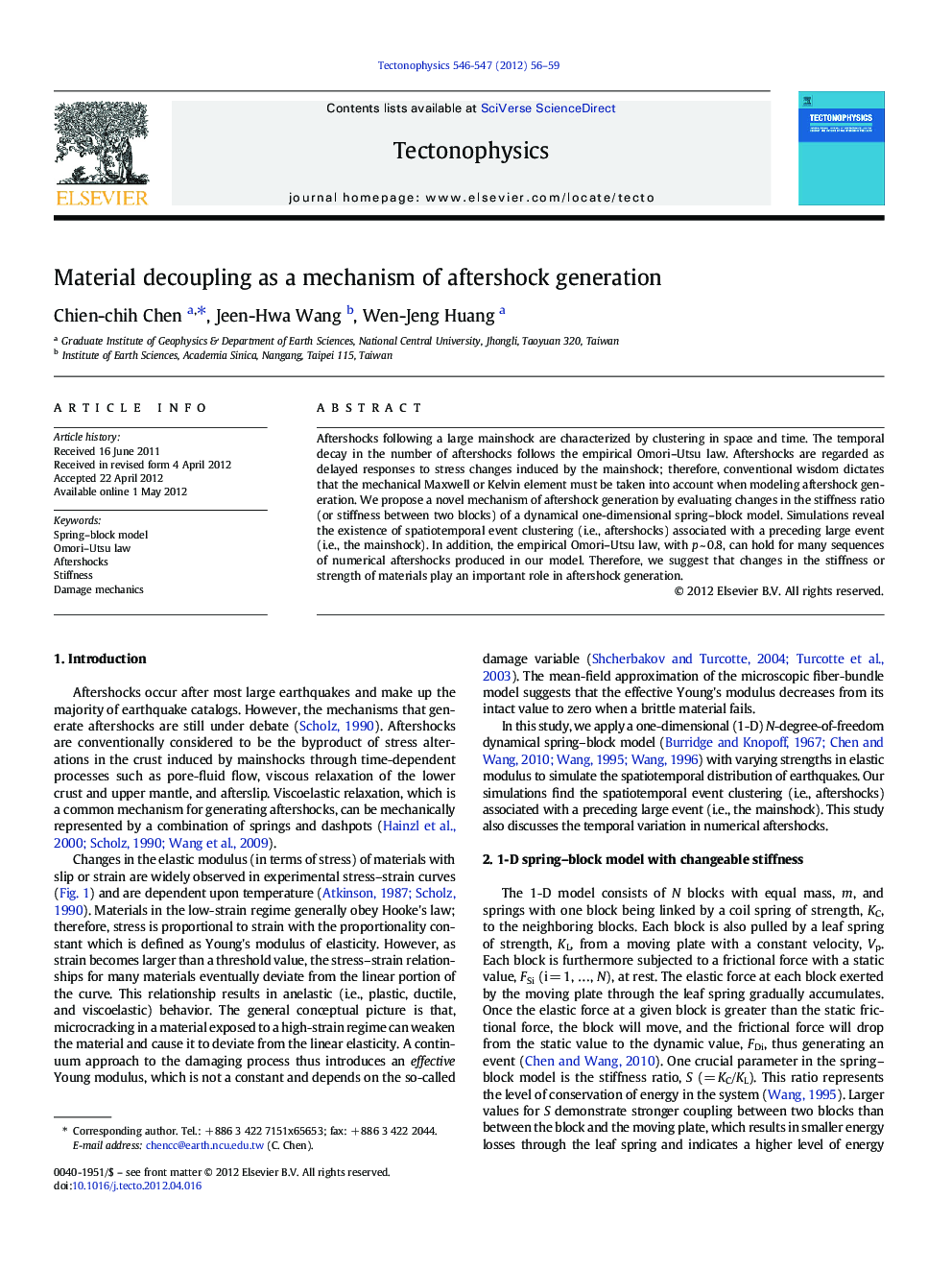| کد مقاله | کد نشریه | سال انتشار | مقاله انگلیسی | نسخه تمام متن |
|---|---|---|---|---|
| 4692811 | 1636821 | 2012 | 4 صفحه PDF | دانلود رایگان |

Aftershocks following a large mainshock are characterized by clustering in space and time. The temporal decay in the number of aftershocks follows the empirical Omori–Utsu law. Aftershocks are regarded as delayed responses to stress changes induced by the mainshock; therefore, conventional wisdom dictates that the mechanical Maxwell or Kelvin element must be taken into account when modeling aftershock generation. We propose a novel mechanism of aftershock generation by evaluating changes in the stiffness ratio (or stiffness between two blocks) of a dynamical one-dimensional spring–block model. Simulations reveal the existence of spatiotemporal event clustering (i.e., aftershocks) associated with a preceding large event (i.e., the mainshock). In addition, the empirical Omori–Utsu law, with p ~ 0.8, can hold for many sequences of numerical aftershocks produced in our model. Therefore, we suggest that changes in the stiffness or strength of materials play an important role in aftershock generation.
► 1-D spring–block model with varying strengths in elastic modulus is investigated.
► The empirical Omori–Utsu law holds for numerical aftershock sequences.
► Microcracking decouples a fault block from neighbors.
► Decoupling mechanism reproduces spatiotemporal clustering of aftershocks.
Journal: Tectonophysics - Volumes 546–547, 11 June 2012, Pages 56–59